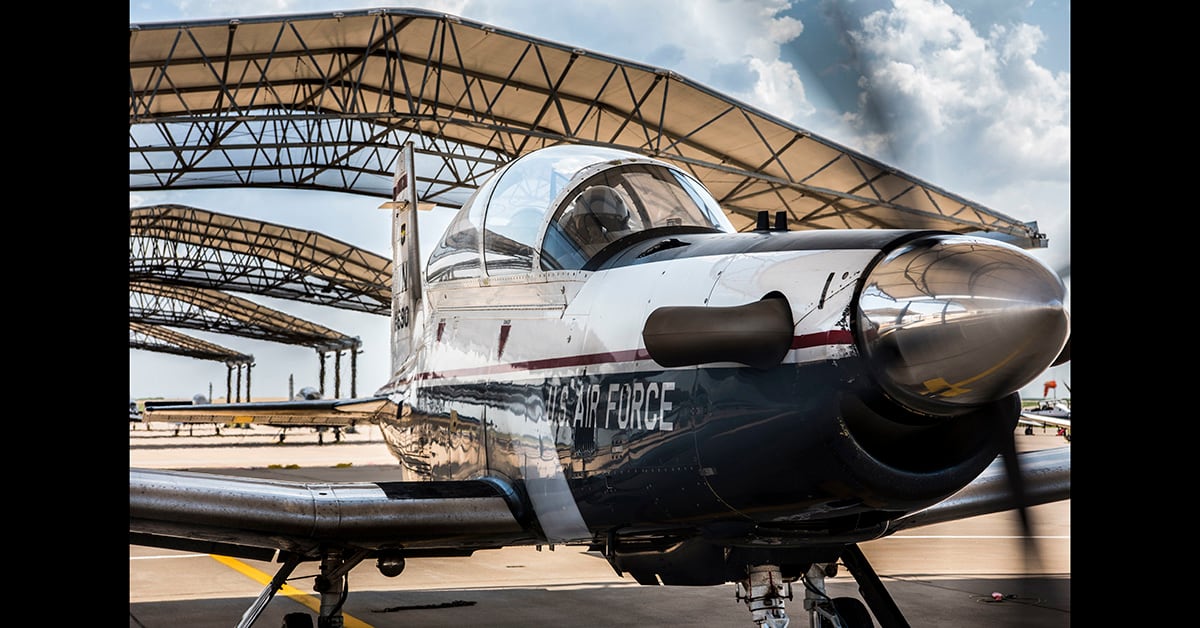This story has been updated with additional information from the Air Force.
Almost halfway through fiscal 2020, the Air Force’s initial ambitious goal for training new pilots appear out of reach.
The Air Force said in the 2020 budget proposal last March that hoped to produce 1,480 pilots this year. But in a Feb. 13 email, Air Force spokeswoman Ann Stefanek said the service now expects to produce about 1,300 pilots this year. That would be only a slight increase over the 1,279 new pilots produced in fiscal 2019.
In a follow up email Feb. 18, Air Force spokeswoman Ann Stefanek clarified that the pilot production goal officially remains 1,480 this year, but the Air Force won’t meet that target.
Stefanek said in the Feb. 18 email that the Air Force still hopes to produce at least 1,480 pilots annually beginning next year. She said that pilot production is still hampered by several factors including a lack of available aircraft and civilian instructors to man flight simulators.
Former Air Force Secretary Heather Wilson said at an October 2018 Senate hearing that the Air Force expected to train 1,311 pilots in 2019, meaning the Air Force’s goal for 2020 is now essentially unchanged from the previous year.
The Air Force has sought to increase the number of new pilots it trains each year as part of a wide-ranging effort to correct a stubborn and serious shortfall in its pilot ranks of about 10 percent.
And it has seen noticeable improvements since 2016. The Air Force trained about 1,100 new pilots in fiscal 2016 and 1,160 in fiscal 2017, then dropped down to 1,109 in fiscal 2018 before bouncing back in 2019. The 2018 drop was largely due to a loss in flying hours after hypoxia problems repeatedly grounded the Air Force’s T-6 fleet.
RELATED

“The [Air Force] is developing several initiatives to help us meet and sustain these higher production levels,” Stefanek said. “The planned growth in production in conjunction with a continued focus on retaining our current pilots is critical to restoring health. While we’ve arrested the decline, we still have several years of focused production and retention efforts to completely stop the pilot shortage.”
Wilson told lawmakers in October 2018 that the service hoped to ramp up pilot production to about 1,500 new pilots annually by fiscal 2022, and maintain that production level in the following years.
Chief of Staff Gen. Dave Goldfein also told Air Force Times in 2018 that he wanted to “set the throttle” at producing about 1,400 to 1,500 new pilots each year, and leave it there. Goldfein said that the Air Force made a mistake in the past by continually increasing or decreasing the number of pilots it sends through the pipeline from one year to the next.
But even that may not be enough to fix the pilot shortfall. In 2017, shortly before he retired, former AETC head Lt. Gen. Darryl Roberson said the Air Force might need to graduate at least 1,600 pilots each year to keep up with its pilot manning needs. But hitting 1,600 would require a considerable investment in resources including more instructor pilots, planes and students who want to learn to fly, Roberson said.
The Air Force has sought to overhaul how it trains airmen to fly to produce more new pilots. The Air Force is increasingly adopting virtual reality flight training simulators under the Pilot Training Next program. And during the T-6 hypoxia groundings in 2018, Goldfein said, AETC used the down time to streamline the undergraduate pilot training syllabus to throw out unnecessary parts and adopt new methods of instruction.
Stephen Losey is the air warfare reporter for Defense News. He previously covered leadership and personnel issues at Air Force Times, and the Pentagon, special operations and air warfare at Military.com. He has traveled to the Middle East to cover U.S. Air Force operations.





